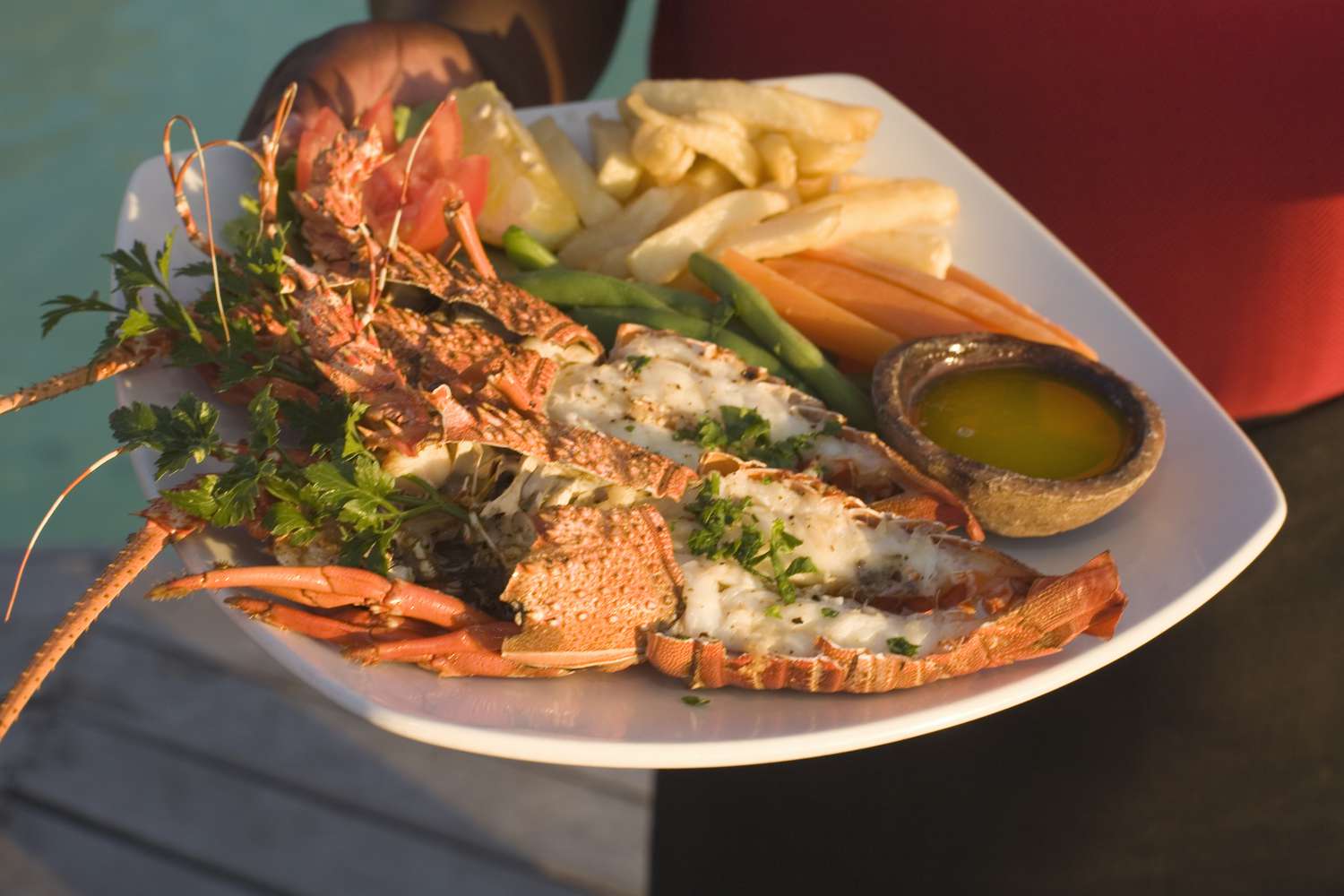Located on the southeast coast of the African continent, Mozambique is an off-the-beaten track destination famous for its paradise islands and breathtaking beaches. It’s also a top choice for foodies, thanks to its rich culinary heritage.
Colonial Influences
In 1498, explorer Vasco da Gama arrived in Mozambique, paving the way for almost 500 years of Portuguese rule. During this time, Portuguese ingredients and techniques became an integral part of Mozambique’s cuisine. In particular, these early colonial settlers are attributed with the invention of piri-piri, a spicy sauce whose name translates from the Swahili for “pepper-pepper”. Flavored with lemon, garlic, vinegar, and paprika, the sauce’s key ingredient is the African bird’s eye chilli, a uniquely African cultivar of the Capsicum chinense chilli pepper. Today, piri-piri is synonymous with Mozambican cooking, and is used as a baste for everything from steak to seafood.
Typical Ingredients
Regional dishes rely heavily on fresh seafood sourced from the country’s bountiful coastline, while the most prevalent meats are chicken and goat. Starch comes in the form of xima (pronounced “shima”), a type of stiff maize porridge; and cassava, a root imported from Portuguese Brazil. Exotic fruits like mango, avocado, and papaya are both cheap and easy to come by. The stars of the Mozambican culinary scene, however, are coconut and cashews, both of which are used liberally in traditional recipes.
Here are a few of Mozambique’s most iconic dishes according to Craig Macdonald, manager and head chef at Situ Island Resort in the Quirimbas Archipelago. We’ve also included the best local beers and spirits to wash them down with.
01
of 10
Galinha Asada
Galinha asada translates from the Portuguese for “roast chicken”, but in Mozambique it is more often grilled, or barbecued over open fires at the side of the road. A staple for local Mozambicans, it can be prepared in several different ways. The most famous, of course, is piri-piri chicken, whereby the meat is marinated in the iconic sauce before being cooked. Ingredients vary from region to region and depend upon what is most readily available, including chilli, lime, onions, and green peppers. Galinha Zambeziana is a special variation from the Zambezia Province. In this instance, the chicken is marinated in the milk of freshly grated coconuts.
02
of 10
Rissóis de Camarão
nataliaspb/Getty Images
Rissóis de camarão are an excellent example of the extent to which Portuguese cuisine has become entrenched in Mozambican culture. A popular appetizer or snack food in both countries, these crescent-shaped croquettes contain a creamy whole shrimp sauce, which, depending on the recipe may also include spices or piri-piri. The mixture is folded into a dough parcel, then dipped in an egg-wash and covered with breadcrumbs before being deep fried. Rissois de camarão can be enjoyed hot or cold, but are best bought fresh from the pan at a street-side stall.
03
of 10
Matapa
Unlike many of the dishes on this list, matapa is uniquely Mozambican. Despite sharing its name with an ancient kingdom of Africa, it is a relatively humble dish, made from stewed cassava leaves blended with ground peanuts, garlic, and coconut milk. It is as delicious as it is simple, however, and it’s worth venturing beyond Mozambique’s Western restaurants to try it. Often, matapa is served with rice as a main dish, with small crabs or shrimp added to the stew for extra flavor. It can also be an accompaniment to seafood or meat, and is especially delicious when mopped up with xima.
04
of 10
Grilled Prawns
Mozambique’s coastline stretches for 1,535 miles and many of its people depend upon the sea for their livelihood. It comes as no surprise, then, that seafood plays a major part in local cuisine. Grilled fish, crumbed calamari, octopus prepared with garlic and smashed potatoes… All of these are easy to find. But, the highlight is undoubtedly Mozambique’s prawns, which often grow to incredible sizes. They are usually served grilled and slathered in piri-piri sauce; although lemon and garlic does just as well for those that prefer a milder taste. Prawns Nacional is another favorite, served with a creamy beer sauce.
Continue to 5 of 10 below.
05
of 10
Chamussas
Wanwisa Hernandez/EyeEm/Getty Images
Portugal is not the only nation to have had an influence on Mozambican cooking. The country also has one of the largest Indian populations in Africa, thanks in large part to the ties created between Mozambique and the Indian state of Goa when both were part of the Portuguese empire. Chamussas are triangular, savory pastries inspired by the Indian samosa. In Mozambique, fillings range from meat and fish to potatoes or cheese. A popular street food or between-meals snack in larger cities like Maputo and Inhambane, they are made special by their unique blend of Mozambican spices.
06
of 10
Dobrada
nataliaspb/Getty Images
Another Portuguese classic reinvented with a Mozambican twist, dobrada was originally a peasant food in Portugal but is now considered a delicacy. The European version involves boiled tripe served with chickpeas or white butter beans and chorizo. In Mozambique, chickpeas, butter beans, and chorizo are harder to come by, and are therefore substituted with potatoes, onions, tomatoes, green peppers, and chillies. Dobrada is usually served with rice, although xima makes for an excellent substitute. You can use the maize porridge to mop up the stew with your fingers; a particularly satisfying way of eating that also saves on washing up.
07
of 10
Paõzinho
tropicalpixsingapore/Getty Images
Usually shortened to paõ, paõzinho is a Portuguese-style bread roll. From the busiest cities to the most remote villages, it is a staple in Mozambique, and bakers are taught the art of crafting the perfect roll from a very young age. This is not your typical, stodgy supermarket roll. Baked in wood-fired ovens and dusted with just the right amount of flour, paõ is impossibly light and fluffy. It’s also cheap, filling, and addictively delicious; especially if you wake up early enough to buy them while they’re still hot. They can be eaten by themselves or as an accompaniment to any meal. Often, they’re stuffed with piri-piri-drenched steak and used to make prego rolls.
08
of 10
Bolo Polana
Named after the Polana suburb in Maputo, bolo Polana is a traditional dessert often served for special occasions. It is made with mashed potato and powdered cashews, creating a uniquely smooth texture and a rich, nutty taste. Citrus zest and vanilla essence usually feature as well. Cashews are amazingly cheap and readily available throughout Mozambique, having been imported to the country from Portuguese Brazil. During the 1960s and 70s, Mozambique was the world’s largest producer of cashews, providing approximately half of the global crop. Bolo Polana is a delicious reminder of that legacy.
Continue to 9 of 10 below.
09
of 10
Mozambican Beer
TracyJaneShaw, iStock
Probably the most ubiquitous beer brand in Mozambique is Laurentina, available in three varieties: Laurentina Preta (a dark lager), and Larentina Premium and Clara (both pale lagers). This is also the country’s oldest beer brand, having first been brewed in 1932. Other popular Mozambican beers include 2M (pronounced dosh-em), Raiz (ranked as the country’s best-tasting beer on ratebeer.com), Manica, and Impala; all of which taste pretty fantastic when served iced cold after a morning scuba dive or a hot afternoon on the beach. Best of all, beer is cheap in Mozambique so even budget travelers can afford to indulge.
10
of 10
Tipo Tinto
Magda Ehlers/Pexel
Mozambique’s most famous liquor is undoubtedly Tipo Tinto, a locally brewed dark rum loved by Mozambicans and visitors alike for its distinctive taste (and dirt cheap price). Drinking it straight is a one-way ticket to a hangover to remember, though, so consider mixing yours with Coke or another kind of soda. The most popular way to enjoy Tipo Tinto is in an R&R (rum and raspberry), made with Sparletta’s Sparberry flavor cool drink. Head to any of the tourist bars in coastal resorts like Ponto do Ouro or Tofo and you’ll see many a reveler with their mouths stained red from this iconic Mozambican tipple.
Source link









